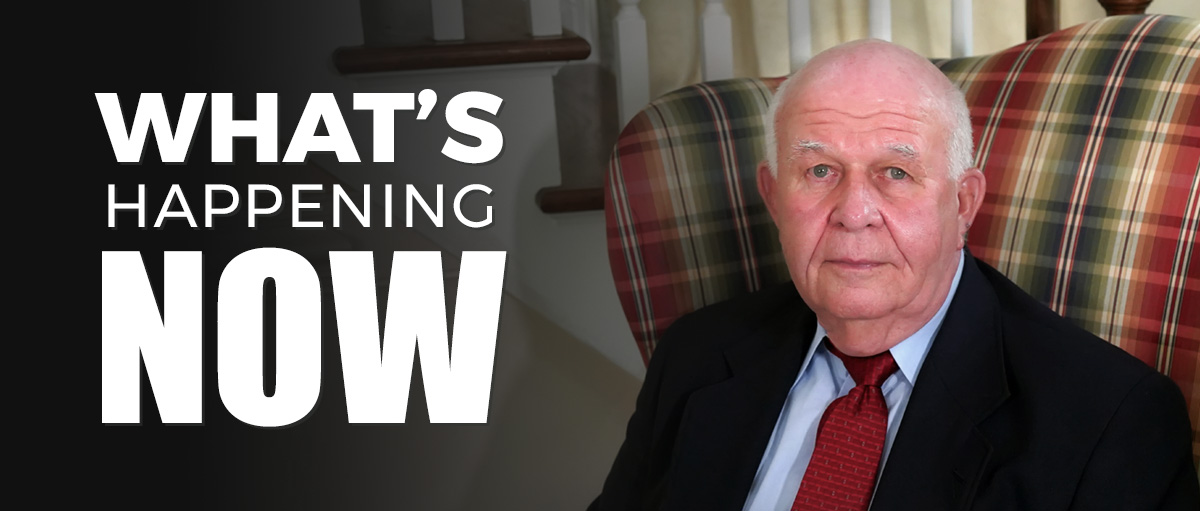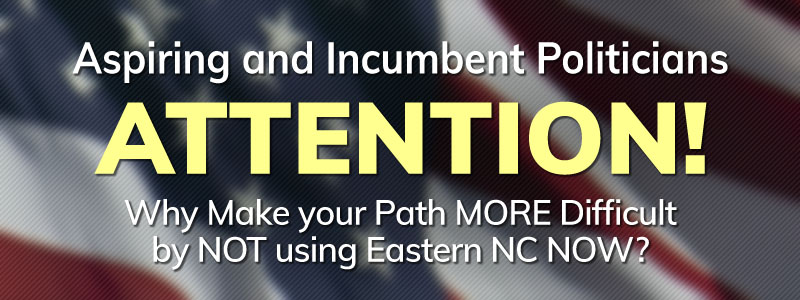Publisher's Note: This post appears here courtesy of the
John Locke Foundation. The author of this post is
Dr. Robert Luebke.
- Gov. Cooper recently declared a "state of emergency for public education," claiming Republican policies aim to "choke the life out of public education" by cutting budgets, siphoning funds, and funneling tax dollars to unaccountable private schools
- Regardless, K-12 education funding has increased for 12 consecutive years under the Republicans, with per-pupil expenditures increasing by 46 percent during that time
- Private schools accepting Opportunity Scholarship recipients must comply with the same health, safety, and nondiscrimination requirements as public schools, meet many other academic and financial requirements listed in state law, and also satisfy the expectations of the students' parents, who provide the ultimate accountability
On May 22 Gov. Roy Cooper declared a
"State of Emergency for Public Education" in North Carolina. Cooper's action derives from his belief that Republican policies regarding school funding, teacher pay, and the expansion of the Opportunity Scholarship Program have been and will continue to be harmful for the public schools.
Over a month after his declaration, with Cooper crusading across the state to get out his message, has the governor succeeded in persuading others into thinking education in North Carolina was in a
"state of emergency"?
You do the math. On June 19 the governor's web site posted a press release titled
"More Education Leaders Continue to Speak Out Against NC General Assembly's Plans to Undermine and Underfund Public Schools." It listed 16 school board resolutions. Those boards represent about 14 percent of school boards in North Carolina. The press release referenced
"education leaders in over 30 school districts" who are supportive of the governor's position. They represent a little over a quarter (26 percent) of North Carolina school districts. Nineteen superintendents from northeastern North Carolina who sent a letter to lawmakers expressing their concern about the expansion of the Opportunity Scholarship Program are also mentioned.
A press release from the governor's office dated June 30 - five weeks after his initial
"emergency" declaration - still referred again only to
"[E]ducation leaders in over 30 school districts across North Carolina [who] have spoken out against these extreme plans that gut funding for public education."
So why are so many educators and the general public not buying Cooper's declaration of emergency? Two reasons come to mind. One, the governor's not being totally honest with the public. And two, he's ignoring a lot of facts that he finds inconvenient.
Choking the Life Out of Public Education?
In his TV message the governor said,
"It's clear the Republican legislature is aiming to choke the life out of public education." The statement makes a strong implication that Republican policies regarding teacher pay, school funding, and school choice have put North Carolina public schools in dire financial straits. Is that true?
When Republicans took control of the General Assembly in 2011, K-12 education spending was $7.15 billion. By 2022-23 education spending had increased for 12 consecutive years and had grown to $11.14 billion. During the same time, per-pupil expenditures increased from $8,436 to $12,345 - a 46 percent increase. Since 2011-12, funding for students has increased $1,651 in inflation-adjusted dollars, an increase of 15.4 percent. In addition, per-pupil spending in 2021-22 ($12,345) was higher than the high-water mark of 2008-09 ($11,819) in inflation-adjusted dollars.
Truth is, spending on K-12 education is the highest it's ever been, yet Cooper would have you believe K-12 public education is starving for funds.
The governor has said the Opportunity Scholarship Program (OSP) will drain billions from North Carolina public schools. Such thinking falsely assumes that every dollar spent on the OSP was a dollar that would otherwise have gone to the public schools. That's not true. While funding for K-12 public schools moves through the Department of Public Instruction, OSP funding does not. Funding and administrative functions for OSP are housed within the University of North Carolina System office.
In Hart v. State (2015), the North Carolina Supreme Court upheld the constitutionality of the Opportunity Scholarship Program. In the decision, the court said the legislature has the right to experiment with other forms of education apart from the public schools. That's exactly what OSP is, another educational opportunity for children, with separate funding and administration. As such, given that there are two different funding streams, it's difficult to claim OSP is siphoning money away from the public schools.
The point of diversion is debated by many. For the sake of argument, say OSP funds are diversions. How much money are we talking about? Some perspective is helpful. In 2021-22, the Opportunity Scholarship program awarded $79,467,926 in scholarships. North Carolina public schools also had $16,760,631,726 in expenditures. That means as a percentage of total K-12 expenditures, OSP dollars constituted 0.47 percent (roughly one-half of one percent). That could hardly be considered
"choking the life out of public education."
Of course, critics of OSP assert the loss of students means less revenue for schools and tighter budgets. The governor's budget office even published an analysis from the Office of State Budget and Management (OSBM) saying that the OSP would cost school districts $203 million in revenue and that the impact of expanding the Opportunity Scholarship Program would fall hardest on small, rural districts.
A closer look reveals that fewer students doesn't necessarily mean less revenue. Other factors are involved. First, North Carolina funds schools based on what is called a Resource Allocation Model, which means the state provides resources to accomplish certain functions. Funding may be provided to fund positions, categorial allotments, or dollar allotments. Briefly, position allotments represent educator positions (e.g. teachers, instructional support staff) the state allots and pays for in given school districts. Categorical allotments represent funding to address differences in student and district characteristics. These funds supplement base funding. Dollar allotments are funds school districts receive for noncertified staff employees and to purchase goods. Districts may receive dollar allotments to pay for teacher assistants and textbooks. These funding streams may be unrelated to enrollment.
Also remember that the OSBM analysis has limitations. It only considered enrollment and not savings from staff reductions. If traditional public schools do see a drop in attendance, the staffing needs will likewise fall, translating into cost savings.
The analysis also said rural areas would have large losses from OSP transfers. What it didn't say is that for those losses to occur, students must have other educational options to choose from. In many of these rural areas, private school options are either limited or don't exist.
For example, OSBM predicted a 7 percent loss in funding in Bertie County. Bertie County has only two private schools, however, and it's not known if those schools could even absorb an additional increase in students. So those projected losses may be only theoretical. In many places, educational options don't exist for rural students. So the total number of students who transfer would be limited, as would total revenue losses.
Cooper accuses the legislature of choosing corporations over classrooms. Instead of
"tax breaks for the rich" and private school vouchers, Cooper says Republicans should back his proposed 18 percent pay raise for teachers.
When you consider the billions of dollars the governor has given away in tax incentives to outside corporations promising to locate in North Carolina, Cooper's statement rings hollow. Let's face it, the governor has been more than happy to approve tax incentives for companies and deep-pocketed executives, then have small businesses and other hard-working North Carolinians pay the bill. How the governor can carve out tax breaks for executives and companies and then blast the legislature for
"choosing corporations over the classroom" is hypocrisy of the highest order.
Finally, Cooper has frequently stated his opposition to the Opportunity Scholarships and Republican plans to expand the program is because, he says, the program lacks accountability.
It is of course a myth that private schools lack accountability. Cooper ignores that schools that accept OSP recipients are required to follow statutory requirements to ensure that they comply with the same health, safety, and nondiscrimination requirements that public schools must meet. In addition, North Carolina state law (see G.S. § 115C-562.5) also lists academic and financial requirements for schools that accept Opportunity Scholarship students.
The governor needs to remember, too, that accountability comes in many forms. The progressive version is top-down effort to ensure government policies meet goals. But how is that working? A quick review through some major indicators of test scores, proficiency rates, college readiness and school report cards, paints a discouraging picture of public education.
Who has been held
"accountable" for such dismal results? Who has been fired? Which failing schools have been shut down? Measures with no consequences is not accountability.
While the law helps to enforce a degree of accountability for private schools, Cooper forgets that parents provide the ultimate accountability. They are the ones who find out if the schools work and if the schools are responsive to their child's academic, social, and emotional needs. If parents don't like what's going on in the classroom, they will take their child out of the school and go elsewhere.
We also need to remember our courts have upheld the primacy of parents in directing the education and moral upbringing of children (see, e.g., the 1925 United States Supreme Court case Pierce vs. Society of Sisters). Because no one is more invested and committed to the success of a child than a parent, it makes sense to empower parents and affirm parental rights.
Despite these realities, many who oppose school choice question the ability of parents to make good choices. Do policymakers really think parents would sit idly by if schools ignore their academic or social concerns? If the governor thinks schools really lack accountability, he should tell us why he chose to send his daughter to a private school.
Part 2 of this article will show how the governor's missteps have helped create some of the challenges facing the public schools and helped fuel the desire for educational options that he now seeks to restrict.


























